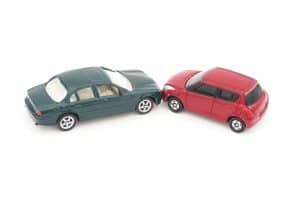
- The Savvy Promise
At Savvy, our mission is to empower you to make informed financial choices. While we maintain stringent editorial standards, this article may include mentions of products offered by our partners. Here’s how we generate income.
Australia's car scene is brimming with options, but sometimes, you find your heart set on a special vehicle unavailable locally. Perhaps it's a classic car from your childhood, a high-performance model not offered here or a unique find from overseas.
Whatever the reason, though, it's crucial to understand the true cost of importing a car into Australia, which you can learn all about with Savvy. We’ve broken down the process involved in importing your car, as well as the key costs to look out for, to keep you informed before you buy your vehicle!
First and foremost, how do I import a car into Australia?
There are several key steps involved in the process of importing your car into Australia. According to the Department of Infrastructure, Transport, Regional Development, Communications and the Arts, the steps to follow are:
- Do your research: take the time to research whether importing a vehicle is suitable for you. Consider the vehicle’s eligibility to enter Australia, the type of approval you should apply for, the time frame involved, whether you need to make modifications and the risks and costs involved in the process.
- Submit a vehicle import application: next, you’ll need to prepare and submit an application to import your vehicle through ROVER, which is run by the Road Vehicle Regulator. You’ll need to pay a fee to apply.
- Receive vehicle import approval: if your application is successful, you’ll receive an email outlining your approval and any conditions that may apply to the usage of your vehicle.
- Have your vehicle shipping arranged: from there, you can go ahead and arrange for your car to be imported. You’ll need to have your vehicle’s interior and exterior steam cleaned, any air-conditioning gas removed and asbestos testing conducted before obtaining a customs clearance.
- Get clearance from Customs: this involves lodging an import declaration and paying several costs, including GST, Customs duty and, if applicable, Luxury Car Tax. Also, as part of meeting quarantine requirements, you’ll need to lodge a Quarantine Entry and set up an inspection.
- Ensure your car satisfies approval conditions: if modifications are required, you’ll need to arrange these, as well as gain evidence of compliance if necessary. Once you’ve hit all these marks, you can register your vehicle with your state or territory government.
Car import cost #1: Tax and duty costs
As mentioned, there are several taxes and duties you’ll be required to pay when importing your car into Australia. These include:
- Goods and Services Tax (GST): 10% paid on the Value of Taxable Importation (total of customs value, customs duty and freight and insurance costs).
- Customs Duty: based on factors such as the Customs Value of the vehicle, the type of vehicle, its age (vehicles over 30 years old are exempt) and the cost of insurance, but will typically either be 0%, 5% or 10%.
- Luxury Car Tax (LCT): 33% tax on the amount above the LCT threshold, which sits at $76,950 for standard vehicles and $89,332 for fuel-efficient vehicles in the 2023-24 financial year.
Car import cost #2: Shipping and customs costs
There are no set costs when it comes to shipping, but these will be determined in part by what type of car you’ll be importing. The amount of time it takes to ship your car to reach Australian shores will also play a part in how much you’ll end up paying. Shipping costs can consist of a wide range of expenses, which can include:
- Customs for both countries you are exporting to and from
- Quarantine inspection fees
- Port service charges
- Freight charges, including the currency conversion rate
- Cleaning
Car import cost #3: Compliance costs
Your car will also be required to adapt to Australian roadworthy vehicle regulations, meaning it may need to undergo testing or other processes to ensure it remains in line. This could be in the form of, but not limited to, the following:
- Gas removal from the air conditioner
- Testing for roadworthiness
- Replacing brake pads (if required)
- Replacing seatbelts
- Converting your car from a left-handed to a right-handed drive (may be required for non-classic cars, depending on the laws in your state and territory)
Car import cost #4: Registration and insurance costs
Once your vehicle is cleared to be imported into Australia, you’ll need to arrange for your car to be registered and insured, as well as pay stamp duty. The costs of car registration and stamp duty are dependent on where you live, so you can find out what the rules are in your state and territory below:
Car insurance is determined based on a wide range of factors, including the following:
- The value of your car
- Where you live (suburb, city and state or territory)
- Your age and the ages of others covered by your policy
- Your prior claims history
- How much you drive per year
- Where you park your car
- Your chosen excess
- The type of insurance you choose
How much does it cost to import a car from Japan to Australia?
The cost of importing a car from Japan to Australia depends on the many variable elements listed above. However, because of the free trade agreement between Japan and Australia, you won’t have to pay any duty on the import of your vehicle. This can save you money compared to importing a car from another part of the world without such an agreement with Australia.
How much does it cost to import a car from America to Australia?
Like Japan, the USA has a free trade agreement with Australia which removes the need to pay duty costs on the import. However, unlike Australia and Japan, cars in the States are built to drive on the right-hand side of the road. This means you’ll have to have your car converted to a right-hand drive if it doesn’t meet the requirements for left-hand drive cars where you live, adding further cost to the importation.
Can I get a car loan to finance the purchase of my imported car?
Yes – there are options available to those who wish to use a car loan to help them purchase a vehicle imported from overseas. However, it’s important to note that you may not have the same wealth of options for non-imported vehicles, according to Savvy Managing Director Bill Tsouvalas.
“While there are lenders in Australia who offer loans for imported vehicles, these are often limited to specialist providers, so you won’t have as many options to compare from”, he said.
“They may also come with additional car loan requirements, such as higher minimum deposits and further vehicle age restrictions.
“If you’re unable to get a car loan for your imported vehicle, another option is to take out an unsecured loan, but it's worth noting that interest rates for this type of finance tend to be higher.”
If you want to learn more about your imported car finance options, you can get a quote through Savvy today and speak to one of our friendly consultants!
Did you find this page helpful?
This guide provides general information and does not consider your individual needs, finances or objectives. We do not make any recommendation or suggestion about which product is best for you based on your specific situation and we do not compare all companies in the market, or all products offered by all companies. It’s always important to consider whether professional financial, legal or taxation advice is appropriate for you before choosing or purchasing a financial product.
The content on our website is produced by experts in the field of finance and reviewed as part of our editorial guidelines. We endeavour to keep all information across our site updated with accurate information.
Approval for car loans is always subject to our lender’s terms, conditions and qualification criteria. Lenders will undertake a credit check in line with responsible lending obligations to help determine whether you’re in a position to take on the loan you’re applying for.
The interest rate, comparison rate, fees and monthly repayments will depend on factors specific to your profile, such as your financial situation, as well others, such as the loan’s size and your chosen repayment term. Costs such as broker fees, redraw fees or early repayment fees, and cost savings such as fee waivers, aren’t included in the comparison rate but may influence the cost of the loan. Different terms, fees or other loan amounts may result in a different comparison rate.









